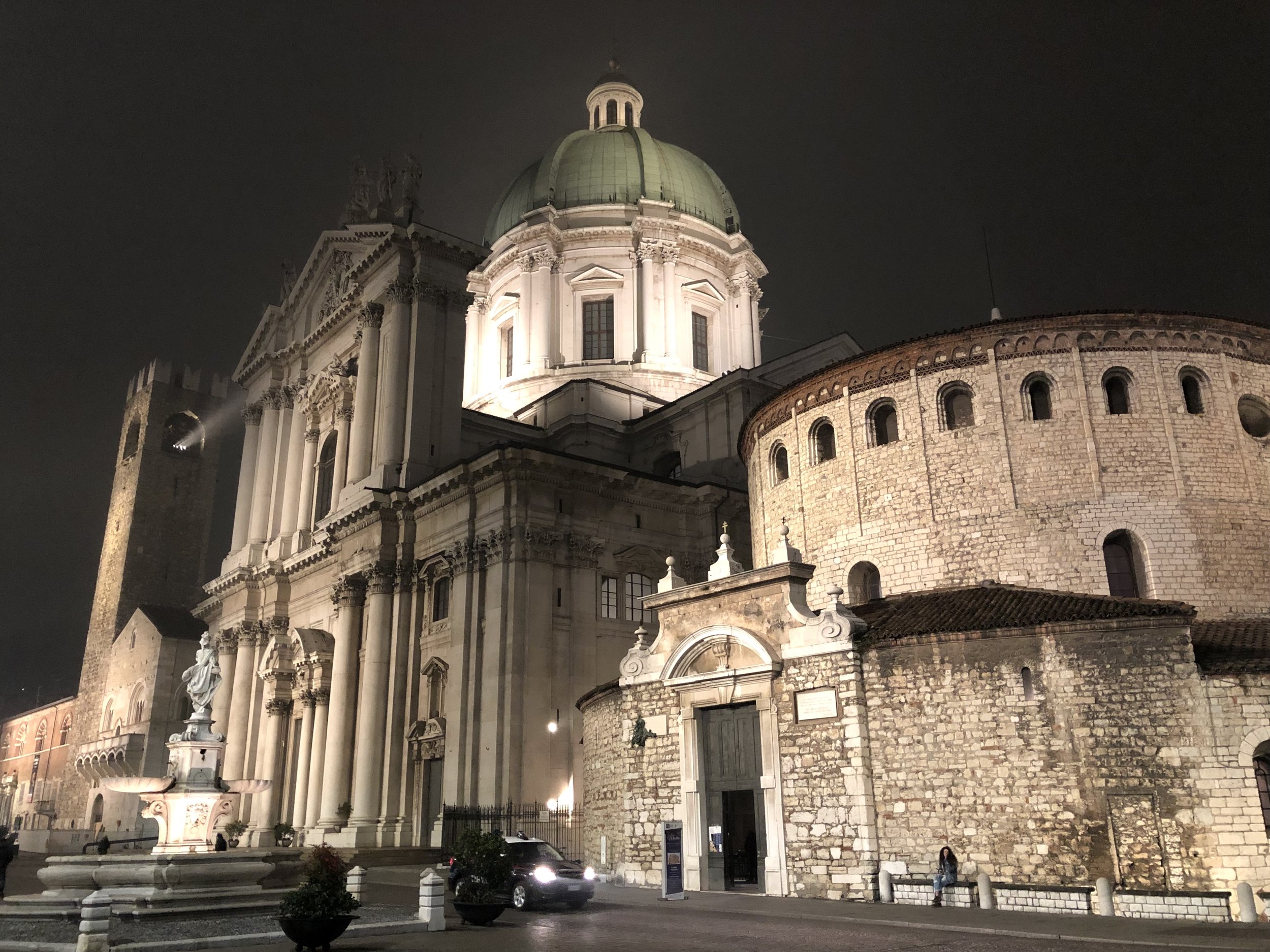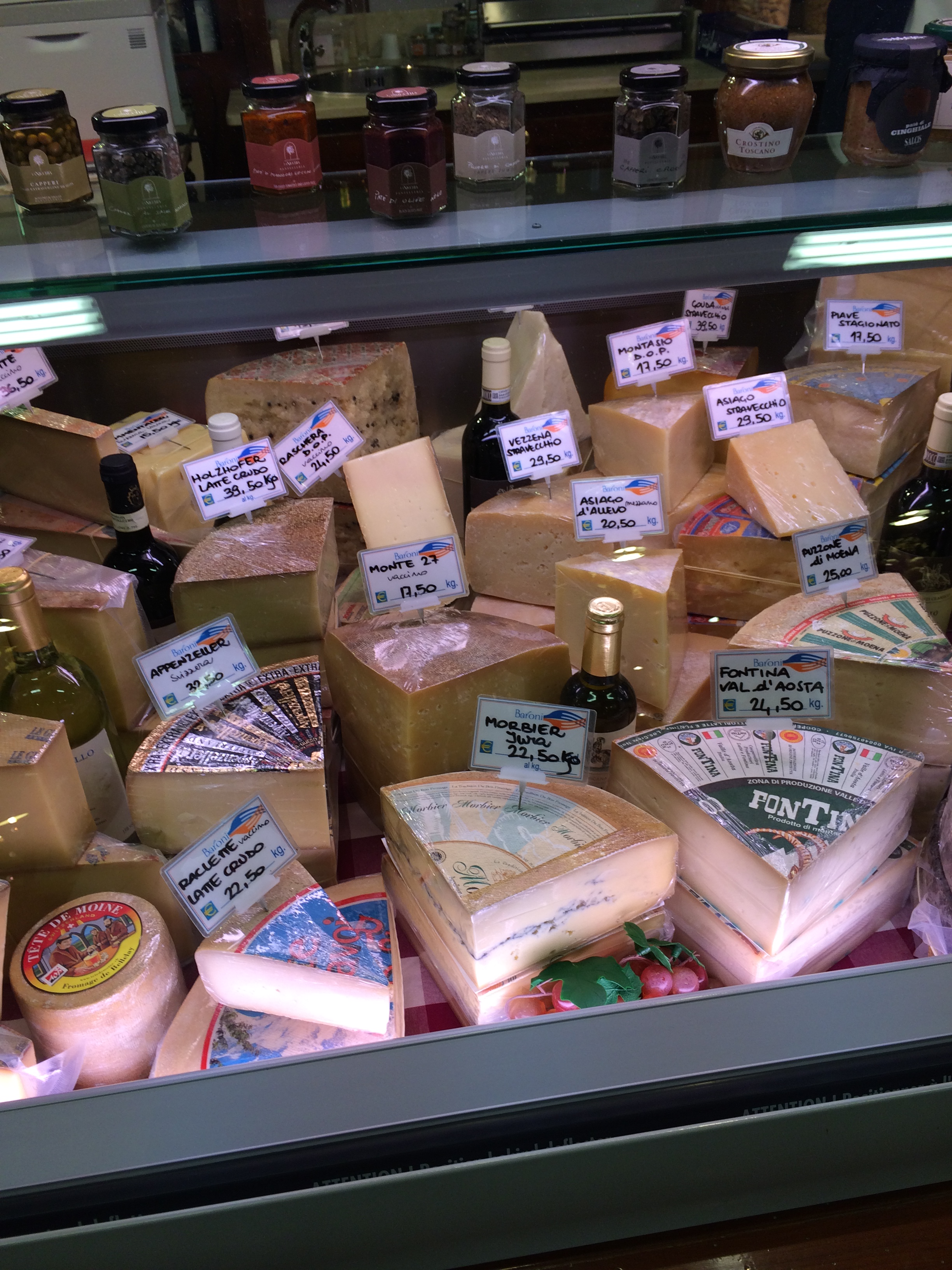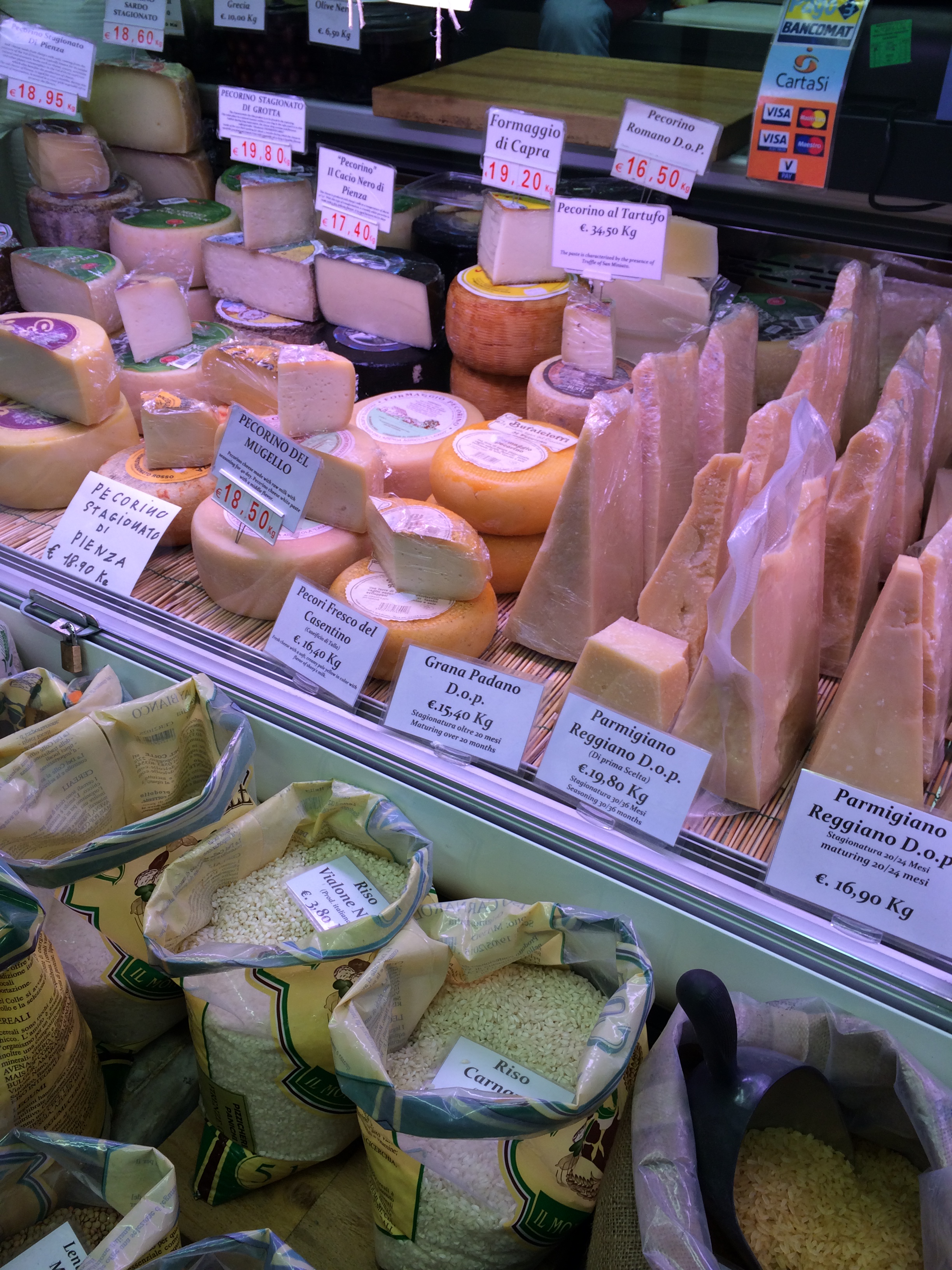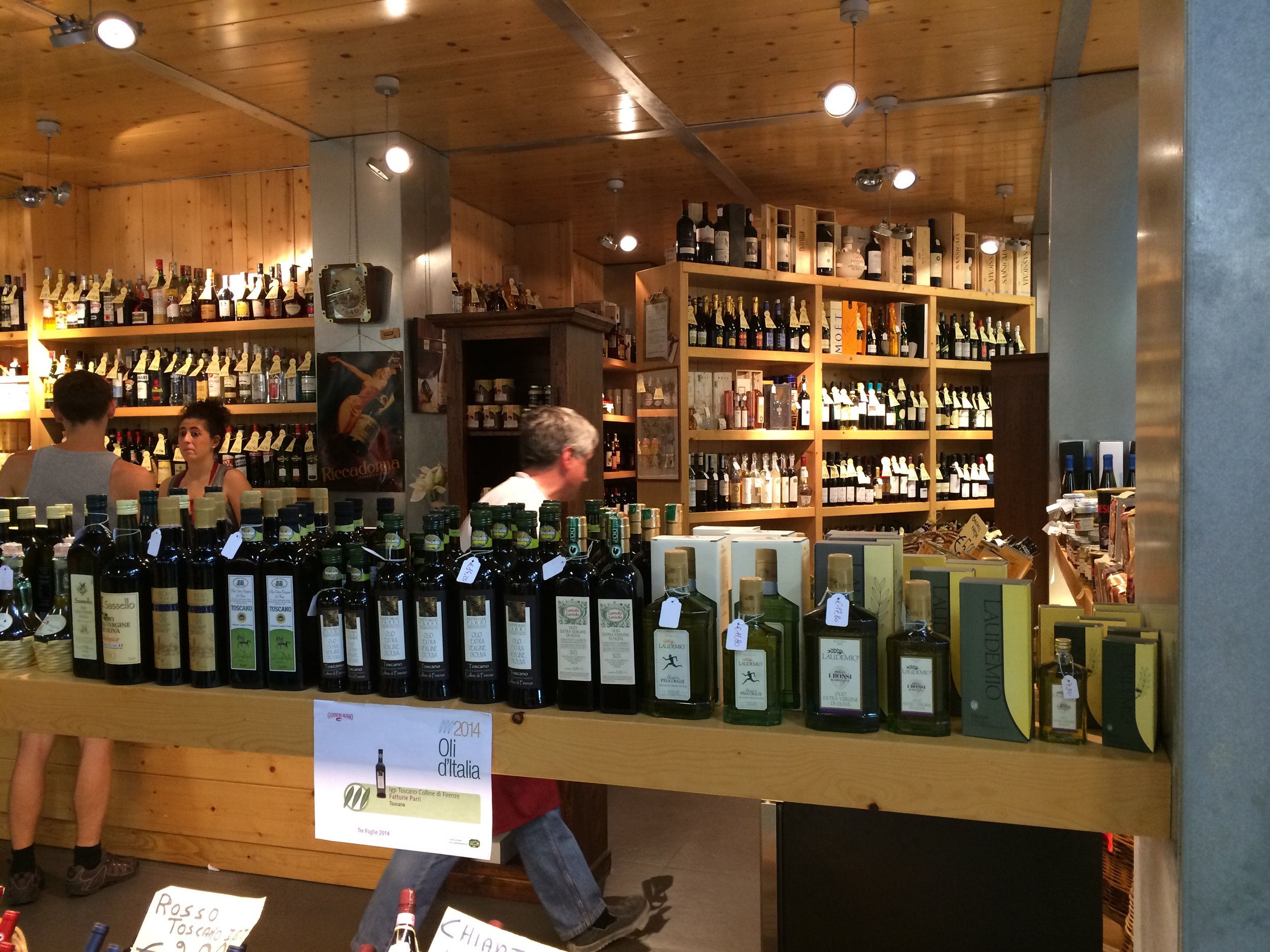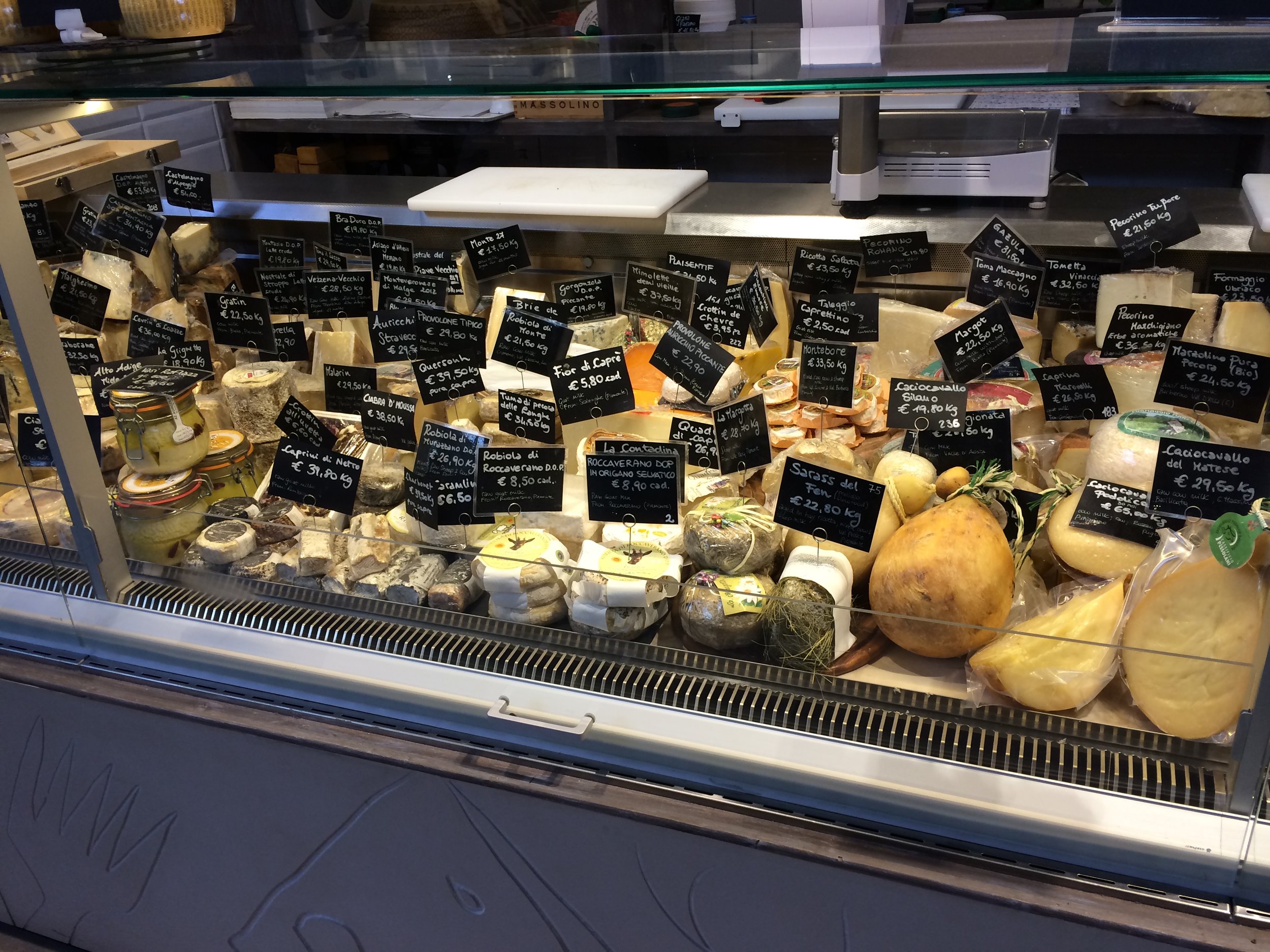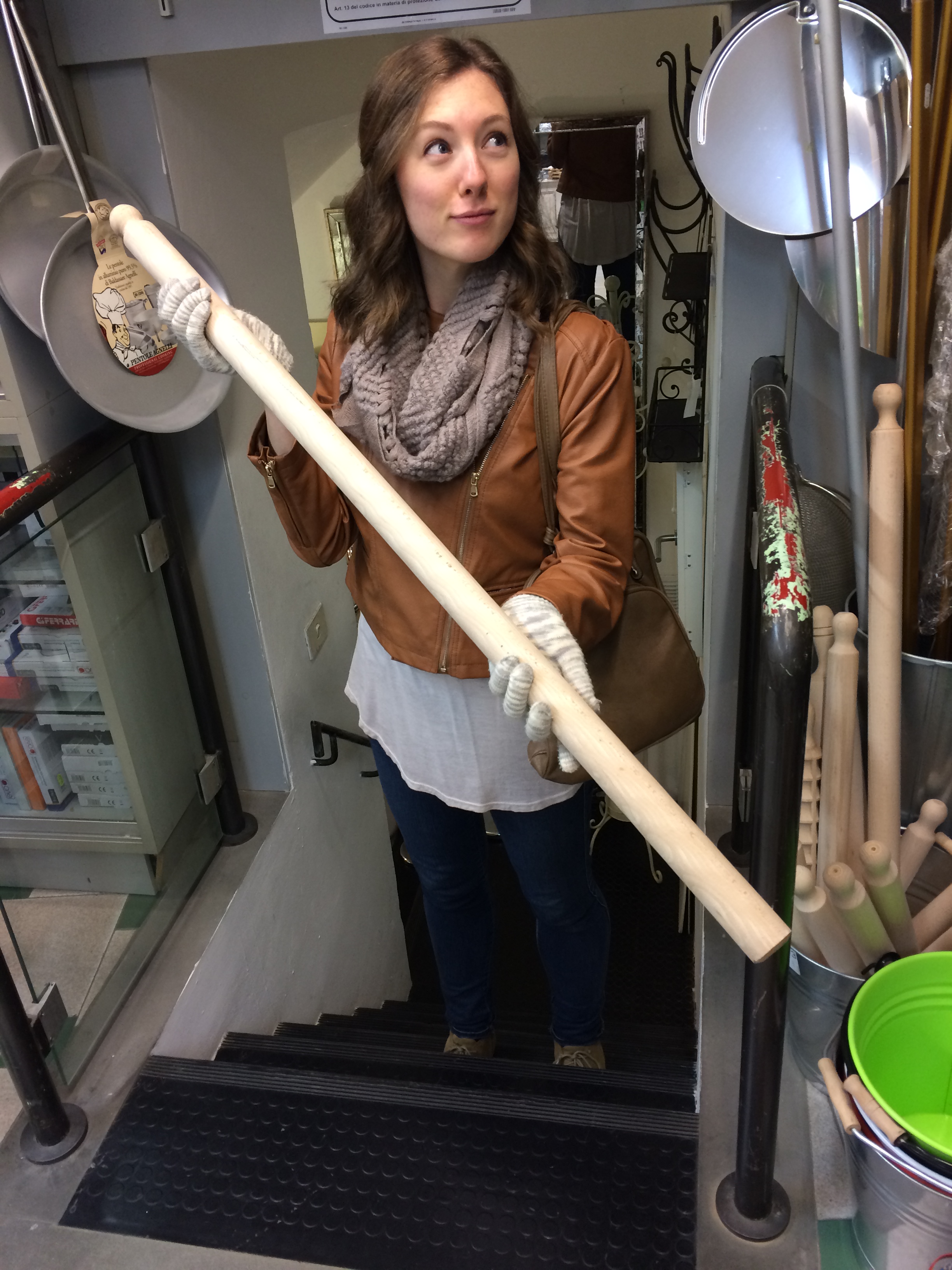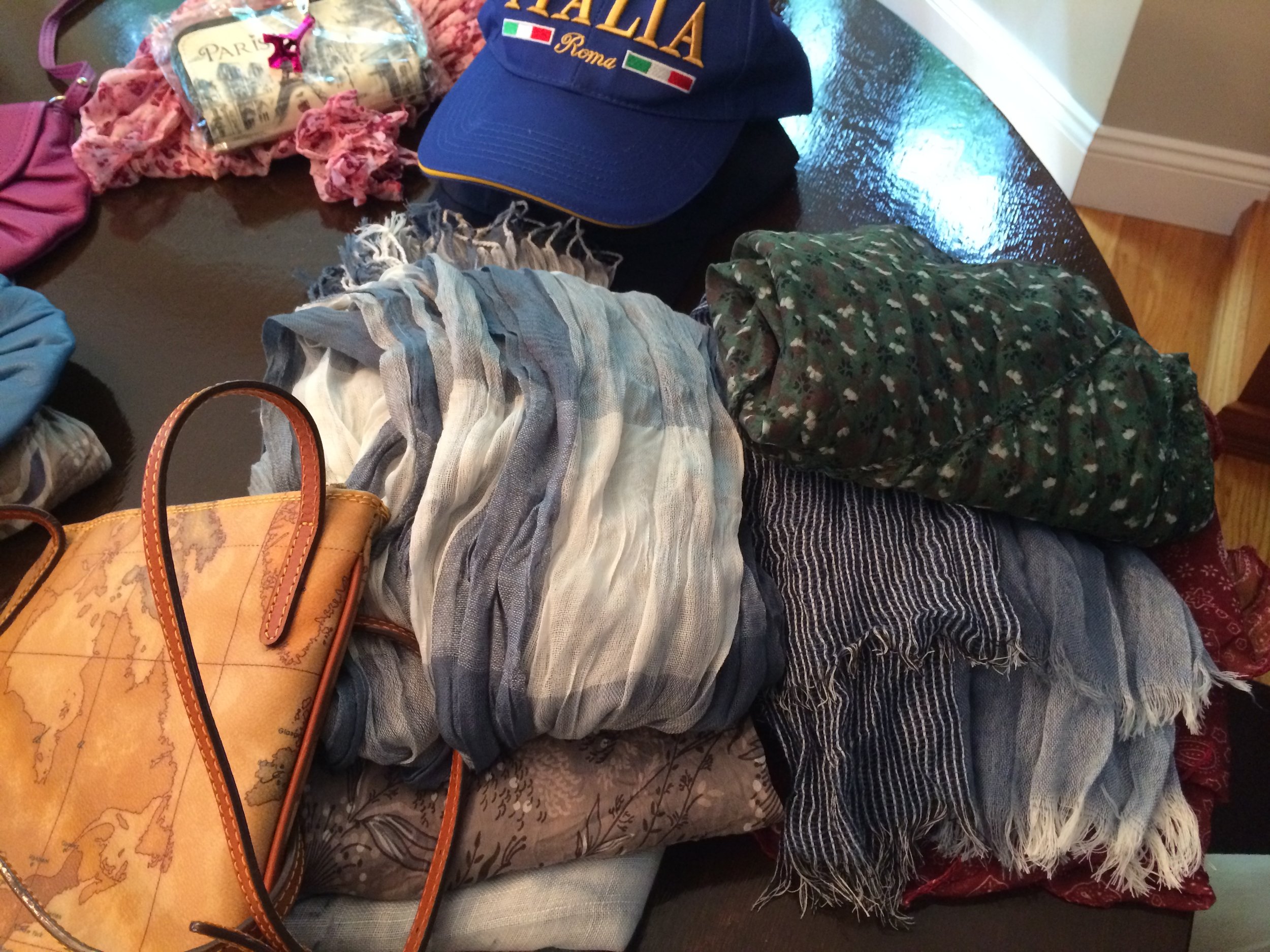A Beginner's Guide to Italy: 20 1/2 Things the Guide Books Might Not Tell You
/Welcome to the first "All Things Italy" post! I'm glad you're here. I'm glad to be here, too. It's good for the soul to be able to talk or write about things, and in this instance, hopefully helpful to whomever may come across this blog! Whether you have been, are planning to, or are still dreaming of traveling to Italy, I hope my trial/error, observances, and gleanings from friends both national and international will be of use to you; or if nothing else, an insight into what the folks on the other side of the globe are up to, more than just the politics on the news.
If you're anything like my mom and I while planning trips, you've probably read every edition from the last decade of The Backpacker's Guide, Rick Steves, Planet Earth, and Forbes, exhausted every airline website for cheap tickets, booked all your airbnb's, and compiled endless lists of what and how to pack, language cheat sheets, top sights to see in each city, foods not to miss, directions for the subway/train/bus to get from A to B, what NOT to wear, what souvenirs to buy, and a list of the local emergency phone numbers and services. And if this not how you plan your travel experiences, well, let's just say you probably save a lot of time, spend more money, are less stressed, and might miss out on some of the little experiences. But that's why I'm writing this, to share some of the things learned with endless hours of research, reading, traveling, and now living in Italy. So if your brain is spinning with information and Rick Steves left you with some questions, hopefully this list will help you navigate smoothly in Italia by pointing out some of the little, albeit important things.
This post may contain affiliate links. If you make a purchase using these links, Jennyblogs may receive a small commission, at no extra cost to you. This helps to support Jennyblogs. Where possible, links are prioritized to small businesses and ethically and responsibly made items. For further information see the privacy policy. Grazie!
1. First things first: 911 won't work in an emergency
You're in a foreign country and someone just stole your purse or you tripped down some stairs while staring at some ancient building. What do you do?
Call 112. The European Union has a universal number of emergency (this is a great idea) however, it's taken some countries longer to adopt it than others, and in some provinces in Italy it still isn't completely integrated. In these instances, it will connect you to the police emergency line, which in theory should be just as effective. Thankfully I've never needed to call. Listed below are all the emergency numbers in Italy that will connect you to specific departments:
112 for the general number of emergency or carabinieri (para-military) - for all emergencies or cases of danger, criminal activity, etc.
113 for polizia di stato (state police) - crime, neighbors are making too much noise, the stoplight is broken, etc. (I know everyone keeps their eyes peeled for malfunctioning stoplights while on vacation.)
114 emergenza infanzia (child emergency) - for young people until the age of 29 in peril, bullying, kidnap, etc. (I know, you had pictured a 2 year-old who accidentally drank some bleach, but instead it's a 29 year-old who says somebody's picking on him at the bar.)
115 vigili del fuoco (Firefighters) - for FIRE!
116 soccorso stradale/carro attrezzi (road rescue/tow truck) - for car troubles
118 emergenza sanitaria/ambulanza (health emergency/ambulance) - for yes, any health emergency.
2. Theft is common
You've read it once, you've read it a million times. Because it's true, and it does not discriminate. It's happened to friends while I was with them, famous celebrities, and people I know have prevented it from happening. It almost happened to me once, too. Stay vigilant and smart about your belongings at all times and you should be fine.
Women, across the body purses are wonderful, although be thoughtful of your strap. If someone could tug your purse hard and break the strap, consider wearing something different. The backpack purses are nice, too, but again you want to always be aware of them, periodically check to make sure your purses/bags are closed and stay closed. Men, wherever it is that you keep your wallet that's hard to get.
And those flesh colored under-the-clothes purses for your most preciouses and extra cash? Don't bother. Uncomfortable, lumpy, hot. What if you don't want to leave valuables or cash in your hotel or apartment? Let's put it this way: You should really only have as much cash on you as you're going to use in a day or two, a credit card, and your passport, and all those things should stay on you. Everything else probably shouldn't be with you on vacation, anyway.
Be extra vigilant on buses, while dining (no purses on chairs), busy areas, and wherever there are begging gypsies, the more correct term being the Roma people. They are easy to spot, dark skin and hair, usually have bright colors on, the women with long skirts and often heels, and layered shirts. They have various tactics for getting money, shaking cups at you, laying on the street or feigning handicaps to evoke sympathy, or sometimes, downright stealing. The Italians in general (around 80%) are unfavorable towards them, but they are humans and should be treated as such, even if they have lamentable habits. But don't we all?
Keep these tips in mind and again, you should be fine!
3. Those bracelets and trinkets offered to you for free are never free
Speaking of theft, the cons are not alway so obvious as purse snatching. The tactics or objects vary by city, but a common one has to do with a bracelet.
My first experience was in Rome, in Piazza del Popolo, where a seemingly friendly man approached me and insisted on tying a thread bracelet around my wrist. I said no, thinking I would have to pay, but after he repeatedly insisted and wouldn't leave me alone, smiling all the while, I finally allowed him, partly so he would go away. I told him numerous times I didn't want to pay for it, I didn't have coins to pay him, etc., but he continued to tie the bracelet, taking his sweet ol' time and complimenting me and my mom the whole time. As soon as he finished I thanked him sincerely but he wasn't about to let us go. He started out quietly, asking for anything, just a coin, 50 cents, 1 euro, but we repeatedly told him no, he had told us it was free. Then he got angry and insisted I give the bracelet back, cursing and insulting us all the time it took me to unknot it. (Why did it have to be a TIE bracelet?!?) Then he sulked away.
Similar things happen in Florence, but usually the bracelets are beads, and the person will be very cordial, shake your hand (in fact, they often grab your hand and won't let go) and ask you all kinds of information making small talk, but ending in asking for money: they need to eat, have to feed their babies, etc. Of course, you feel bad taking the bracelet off and it makes it harder when they don't want to accept it back while pleading with you, so then you feel pressured to give them a euro or two. All part of a tactic, and I'll tell you this from experience, it's usually best to avoid them if you don't want to give money and don't like saying no a million times.
It's not fun to refuse, I feel bad for the situation so many of the immigrants are in, but I also don't like some of the tactics they use. I know several people who have tried to help, stopped and talked long whiles with some of the people begging on the streets. Then, the next day, they see them again, shaking their cup or sitting on the street, but they act like they don't know them. Or, sitting by signs that say "Help, I'm hungry" and they refuse perfectly delicious food. Unfortunately, drugs and alcohol play a big part and a few will even be up front about it if you ask them.
4. Don't trust a restaurant that has "greeters" standing outside
You're tired, feet hurt, sunburned, and starving after spending the day sightseeing. All you want is a nice sit down restaurant with a giant bowl of pasta and a glass of wine. A smiling man in black with a red bow tie and apron smiles and greets you with a "Buonasera!" as you pass, then continues to offer you something to drink, pizza, pasta, or anything else you might like in fluent English, gesturing to the menu written neatly on a blackboard next to him, also in English with choice Italian words anyone would understand. If anything like this happens to you, simply reply with "no grazie" or "no thank you" and walk away. This is not a place that will give you authentic or even good Italian food. If the greeter proceeds to advertise that none of their food is frozen or microwaved, please turn your walk into a sprint. If the restaurant is in full view of a major landmark of that city, there's a good chance it's tourist food and the high prices reflect that. You want to take your time strolling in some smaller streets, often away from the historic city centers and crowds, and find the places that have mostly Italians at them and might not seat a lot of people. Stay away from catch phrases such as "authentic," "cucina Italiana," or anything that tries to indicate its Italian-ness; Authenticity doesn't need advertising.
5. Water is not free
I'm not just talking about that bottle of water to carry around with you, any restaurant you go to you're going to have to pay for water. Italians don't drink tap water or serve it in restaurants, and with good reason. The water here is hard, very much so in Tuscany; I've seen the pebbles of calcium and who knows what else stuck in a friend's kitchen sink water filter after just a few hours and heard how the water will run gunky and brown at times. Then think how old some of the pipes are under these ancient cities, and you can understand why the Italians consume so much bottled water. If the idea of paying for water in restaurants seems ridiculous, as it did to me for so long, just make sure to drink plenty of (cheaper) water before and after the restaurant, and order a bottle of wine with your meal instead. :)
An exception to the rule would be the taps around the city, the water is usually pretty tasty from there and great to fill up water bottles. Some are quite deluxe because they are connected to underground springs. There's one in Piazza della Signoria where you can choose from natural or sparkling water. ("Wis gas")
6. Expect a cover charge at most restaurants
Known as "Il coperto," this fee usually hovers between 1.50-2.50 euros per person, and covers that "free" bread they brought you at the beginning of the meal, napkins, silverware, and tablecloth. If you notice on your bill that the "pane" or bread is listed separately from Il coperto, as I once noticed indignantly, that often happens when the bread is made in house, or "produzione propria." Nothing is free in Italy, and if someone insists on giving you a gift, you should be highly suspicious. (see #3 above)
6 1/2. Really, it's not necessary to tip
I know, I know, if you're American, you're going to feel like a real jerk not leaving a tip. Honestly, no one is going to think you are a tight wad. There just isn't a tip culture here. You can think of the money that went toward paying for the water and cover charge as your tip, if that makes you feel better. If you really want to leave a tip because of exceptional service, leave a couple euros. But don't feel guilty if you don't!
7. "To Go" and Doggy-bags aren't common
Taking away and eating in are two very separate categories for the Italians. Either you eat at a restaurant without taking home a doggy bag, or, for certain places, like bakeries and pizza places, you can get your food to go. Even when the portions are large, like when one pizza is considered one serving, they don't ask for to-go boxes. They eat the whole pizza. Their dinners are usually long and sociable, with plenty of time for eating and digesting. It always impresses me how even the kids and petite women can pack away a whole pizza. Those who are watching their figure, however, usually leave the crust. Of course, if you want a to-go box, go ahead and ask for it, just expect some weird looks and tinfoil instead of a box. And coffee to go? Better not, unless you're at a trendier, younger coffee place and not the typical Italian bar. Off the top of my head, the ones that offer to-go coffee as part of their service include Arnold's Coffee, Melaleuca, Ditta Artigianale
8. Coffee = Espresso
Espresso, or as they more commonly call it, "caffé normale," is the most common coffee beverage here, usually drunk at the counter in a matter of minutes. If you prefer a touch of steamed milk in your espresso, order a "caffé macchiato." Don't forget to try a cappuccino in the country where it was christened, or my favorite sweet coffee, caffé al ginseng. Really, it's sweet and delicious and nutty and ginseng supposedly has some health benefits. If you really miss American coffee, order the americano, which is just water added to an espresso. Drip coffee is becoming more of a thing here, and a select few places do a pretty decent Chemex or V60.
Most of the typical coffee choices come unsweetened (I'm a fan). Oh, and remember if you order a latte, you're just going to get a glass of milk. (Latte means milk.)
9. Ice? What's that?
Ice isn't a given here, so if you can't stand drinking a soda without ice, you might want to request it. If you are in a place used to dealing with tourists, then they might ask. Otherwise, your soda/drink will *probably* come cold, but no ice. Or maybe just cool. Italians think abrupt temperature changes are unhealthy, so an ice cold beverage on a hot day? That's a no-no. You might come down with a cold.
10. The bar is not just a place for alcohol and adults
The word "bar" in Italian means much more than a place to congregate later in the evening and throw back a few drinks. My friends and family may think I've turned into a lush for as often as I talk about "going to the bar." It's true they serve alcohol any time of day, no one ever has to say "It's 5 O'clock somewhere," but bars are so much more than beer and mixed drinks.
The bar is an integral way of life here. You can find one just about on every corner, open from 6:00 or 7:00 in the morning where the Italians linger a few minutes to throw back an espresso, eat breakfast and sometimes their lunch break, discuss the latest soccer (calcio) match, read the newspaper, talk about the weather, gossip about the neighbors, and people-watch. They might return several times throughout the day to the bar nearest their home or workplace, or the elderly generation might just sit and watch passers-by for hours. Then, somewhere around 6:00pm, the bars magically turn into what I grew up knowing as a bar and they no longer serve coffee. All around, bars are quite magical.
11. Sitting down at a bar or cafe may double the price of your hot chocolate
There are three types of caffès here: The type that charges more if you sit down to enjoy your beverage, the type that charges more only if you order sitting down instead of first ordering at the bar, and the type that charges the same no matter what you do.
If you're not sure, order at the bar and then, ideally after you've paid, ask if you may sit down. That way they won't surprise charge you 5 euro for the hot chocolate you thought was 2.5. This usually happens in more upscale locales rather than your humble local bar, but nevertheless, it's always better to ask and be safe than sorry.
Another thing to note is that some bars and caffès don't care whether you pay as you order or after you've enjoyed your treats, while others require you to pay first and then show your receipt to the barista. If the latter is the case, there will probably be a sign, so keep your eyes open, or, just ask. (I'm a big fan of drawing as little attention to myself as I can, and prefer to observe how the locals do it or read signs before proceeding.)
12. Italians will faint if you drink cappuccino after 12:00pm. Or will they?
After reading in just about every guide book and blog that Italians will all but have a heart attack if you drink a cappuccino after noon, you can imagine my shock when one time my Italian language partner ordered a big ol' cappuccino at 4:00pm. After scraping my eyebrows off the ceiling I asked her how she could betray her country like that (I'm sure I didn't phrase it that way) and she kindly explained to me the logistics.
You see, drinking coffee with milk in it together with food is wonderful for breakfast, but for lunch and dinner, espresso is what you drink after the meal to help aid digestion. Milk would upset your digestion with any meal heavier than breakfast, so that's why you should stay clear "after 12:00pm," or the usual cutoff for breakfast hours. But. If you are drinking the cappuccino in the afternoon at say, 4:00pm, or any time you're not eating food, you're in the clear. At that point there is no food digesting to be messed up. You'll only see the Italians fainting and throwing evil glares if you order a cappuccino with that pasta and truffles. Seriously, they don't go together.
13. You can drink anytime, anywhere
If you exit early in the morning, the evidence of last night's partying might not be swept away yet. Boxed wine, how classy.
Yes, I'm talking about alcohol. Due to open-container laws in the States, you have to think twice about where to pop open that beer. There is no such law here, and you can take along that bottle of wine and wine glasses to any piazza, park, or romantic spot you'd like. As I mentioned above, there is no 5 O'clock social rule here, and have seen people drinking beers before 9:00am while I'm still finishing my cappuccino, or opening bottles of wine at 11:00am for a little pre-lunch.
Drunkenness is frowned upon here, and so even while the land may be flowing with Chianti and Brunello di Montalcino, all but the younger generations know how to drink responsibly. Drunkenness usually occurs on special occasions such as soccer matches and holidays. If you stay out later at night, the sloshed you see are probably American students and the younger generation of Italians out partying and clubbing.
14. Kids' menus aren't common
This one was brought to my attention by friends with kids. After it was brought up, I realized how right they were. It's rare that I've ever seen a kid's menu. Children here usually eat whatever the parents eat, and once they are older, get their own plate. Makes a lot of sense to me, rather than getting some completely non nutritious mac n' cheese or chicken tenders that they probably won't end up eating anyway.
15. Don't touch the fruit!
Or a nonna might scold you. My mom and I wouldn't know that by experience, nope. Really, they're very touchy about their fruit. Plastic gloves are provided in every grocery store and at markets, where the person at the stand might not let you touch the fruit at all but put the fruit and vegetables in bags himself as you point out what you want.
One time while at the grocery store, I didn't want to waste a plastic glove to get just one apple, so I decided to sneak over and snatch an apple sans glove before a nonna saw me. While I was standing there a woman came up next to me to get some peaches, and actually apologized to me that she wasn't using a glove. She obviously hadn't noticed that I was in no place to judge, also without a glove. Two rebels touching the fruit, lalala.
16. Use free bathrooms when they are available to you
The free services of a restroom in your hotel, the bar where you just drank a cappuccino, or the restaurant you just ate in should all be utilized when possible. The moment you step out the door of your hotel you will be at the mercy of the Italian city centers, where there are fewer public bathrooms than you'd like, hard to find when you need one, and consequently, if easily found or advertised, probably not free and more likely not sparkling clean. Train stations and near popular tourist sites there are bound to be some but almost always at cost. It will depend on which city you are in how much you might pay, I believe I've seen the bathrooms near the Florence train station cost 0.70-1.00 euro and smaller Tuscan cities such as Siena 0.50, whereas Rome will be 1.00 or 1.50, and Venice, the only place I was desperate enough to pay, and ended up paying 2. whole. euros. I think it's low to make people pay for bathrooms, and as a rule, will suffer until seconds before wetting my pants until giving in to paying for a bathroom. But Venice got the best of me. Not to mention constantly looking at water. Yikes.
Refusing to pay for a toilet has led me to know where the nearest free bathrooms are around Florence. As I mentioned above, you could just pop in the nearest bar or caffè, check to make sure they have a bathroom, and then order something so you can make use of their services. However, if you weren't already planning on buying anything, well, it's basically the same thing as paying for the bathroom, now, isn't it? So, for free bathrooms around Florence, go to
Mercato Centrale, second floor (primo piano). Attention, the bathrooms on the ground floor are NOT free, but go up one flight and tada, free.
Biblioteca Oblate in Via dell'Oriuolo (it's a bit of a maze in there, so after "browsing" for a few minutes, you might want to ask)
Coin in Via dei Calzaiuoli, just south of the Duomo. I know for sure there are bathrooms on the top floor in the lingerie section, but I'm sure there are others if men don't want to pass through there.
La Rinascente, off of Piazza della Reppublica. Again, I can vouch for the bathrooms on the top (home goods) floor, but not sure where the others in the building are located.
Most of the larger grocery stores outside of the city center, such as Coop and Esselunga
Note: Because of the lack of free public restrooms many of the people who have lost some inhibition from alcohol after a certain time at night take to peeing on the streets. If it hasn't rained recently, don't step in the puddles. It's probably man or dog-made.
Also note: European toilets frequently have two buttons, one big and one small. If you're a man and only went #1, press the smaller. It's a less potent flush, saving energy. But if you went #2 or used toilet paper, please press the larger button. Thank you and have a great day.
17. Public Transportation
I get conflicting feelings on this subject. Speaking of Florence, the public transportation here is plentiful, but somewhat unreliable. You can rent a car, take a bus, take a train, or rent a bike. I mean, the buses are Mercedes Benz. The only problem is they frequently don't come on time, at least judging by the paper schedules at each stop, and especially on Sunday or holidays. Unless you're at a bus stop with an electronic screen, and then those are 85% of the time correct on predicting when the buses will show up. But here's what you really need to know about buses and trains in Florence:
bus tickets as of July 1, 2018 cost 1.50 if bought ahead of time (available at any tabacchi, some pasticcerie, and train stations) and is valid 90 minutes. If you plan on traveling by bus frequently, you might consider getting a "carnet" of tickets for a slightly better deal. Check at the train station to see what your options are. There are usually machines and some teller windows dedicated to the bus line.
bus tickets can also be acquired by SMS for 1.80 if you have an Italian SIM card. Write "ataf" and send to 4880105.
as a last resort bus tickets can *usually* be bought aboard for 2.50. Sometimes the drivers run out.
once aboard any bus or before getting on your train, you must validate your ticket. There will be a yellow machine near the front of the bus to stamp it or the green machine near the front door if you have a bus pass to scan. For trains there are machines on the wall or posts, usually not on the platforms. This is important, because having an unvalidated ticket will result in a fine. It varies on the train, but the bus almost always results in a 50 euro fine.
18. Road rules are more like...guidelines
This goes for driving, biking, or walking. The lane lines are to be driven on, the blinker is all but nonexistent, and there are way too many one ways. I have never driven here, only been passenger, and that's about the maximum of my ambitions. Biking is also hazardous, because you can never predict what the cars will do, and even when the cars are stopped in traffic or at a light, the vespas are weaving in and out of the lanes to get to the front. Compared to the US, driving in most other countries I've been to feels like Nascar.
Thankfully I adore walking, but even as pedestrian your life is in peril wherever cars or bikes are present. Just because it's a crosswalk doesn't mean the cars are going to stop and let you pass! Just when you think you're safe on the sidewalk, there's a big van driving up onto the sidewalk to park. Cars park on sidewalks, the sidewalks are full of tourists, and then you're forced to walk on the road. Whatever it is you are doing, just be sure to have all senses on high alert!
19. Either the weather or the weather app is very unreliable
This is mostly applicable to rain and bad weather. All the days it says it's going to rain, sun. And the days it's supposed to be sunny, random rainstorms. You just can't win. So, carry on with your vacation, learn to sing in the rain, and keep that umbrella nearby, just in case.
20. Souvenirs
You probably don't need much help with this one, take one step into any city and you'll see a million things you want to take back with you. (Will this city fit in my suitcase? How about this restaurant? No? I'll settle for the chef.) But in case you're wondering, here are some things you shouldn't forget:
Wine - Chianti Classico, Super Chianti, Barolo, Brunello di Montalcino and Rosso di Montalcino, Vino Nobile di Montepulciano, Vin Santo, and so on and so forth)
Olive Oil - Tuscany is known for its oil with spicy notes. Honestly, the good stuff is like wine tasting, you can pull out all the different notes and flavor profile! If you come in October/November, lucky you! Be sure to grab a bottle of Nuovo Raccolto, the fresh harvest...sooooo goooood. If you want the king of Tuscan olive oils, grab a bottle of Laudemio.
Cheese - You want to get your hands on some Parmigiano Reggiano, aged anywhere between 8-120 months (the older it is the more crumbly and pronounced the taste will be, and also costly), Pecorino (sheep's milk cheese; there are many different varieties with various names but always starting with "pecorino", young, aged, aged in oak leaves, etc., but don't get too young or TSA won't let you bring it into the States), Caciocavallo young or aged, Gorgonzola for the blue cheese fans, Asiago young or aged, Provolone young or aged, or Taleggio. Indulge the younger varieties during your trip, take the aged back with you. Others to be enjoyed during your stay include fresh ricotta, mascarpone, mozzarella di bufala (on your pizza or just eat a big ball of it; yolo Italian edition!), and stracchino. There are many more, but those are some of the staples and favorites!
Truffles - Watch out for fake ones or oil that's just "essence." The real ones will be expensive, but if you don't want to spend 10-20 euros for a few tiny truffles try some truffle honey or the truffles in a jar that's mostly mushrooms, but still delicious.
Honey - There are many different varieties here, ranging from acacia to sunflower, chestnut to million flower. You can find smaller bottles at some markets, great for gifts! Just remember to pack in your checked bag.
Cookingware - For those who love to cook and bake, enter in any kitchen store and you'll be sure to find fun new gadgets to play with at home! Wander around some of the outdoor markets and you'll find fun things too, looong rolling pins for cheap, and beautiful artigianally crafted olive wood pieces.
Leather - So many leather stores around Florence! If you go around the San Lorenzo leather booths or near the bronze warthog, you can haggle the prices down. I recommend the purses, but you might want to splurge on that leather jacket you've been dreaming of for awhile, or maybe just a nice journal. Probably a more ethical option would be the leather school just behind the church of Santa Croce, "Scuola del cuoio", where you can not only buy leather goods but see the craft in process as the traditional methods are being handed down. Prices will be higher here, but so will the quality.
Scarves - Always a nice gift, and in Florence you can find copious quantities for good prices in the same area as all the leather booths. I love the wool ones for winter. You'll be great at haggling by the end of your trip!
Stationary - Florence has beautiful stationary if you or someone you know enjoys sending mail the good old fashioned way! Not to mention calendars, journals, booklets, bookmarks, etc. Pair it off with a feather quill and ink (can be found for 16 euro), and wax and stamps!
Whew, feel ready for Italy yet? If you don't, that's ok. Visiting any new country is always filled with adventure and mishap, but the more reading and researching you can do, the better. You'll not only be prepared, but you'll probably save some money and enjoy things you otherwise might not have noticed!
Until next time, fellow adventurers, I hope you found this article helpful! And as always, if you have any questions, I would love to help! You can find my contact by clicking on "contact" above, or simply leaving a comment below.




